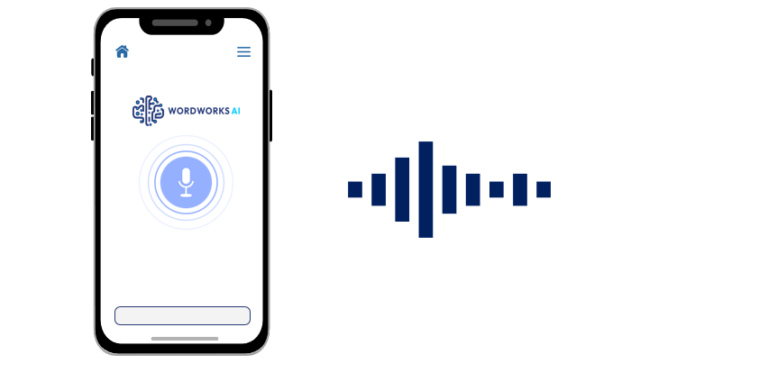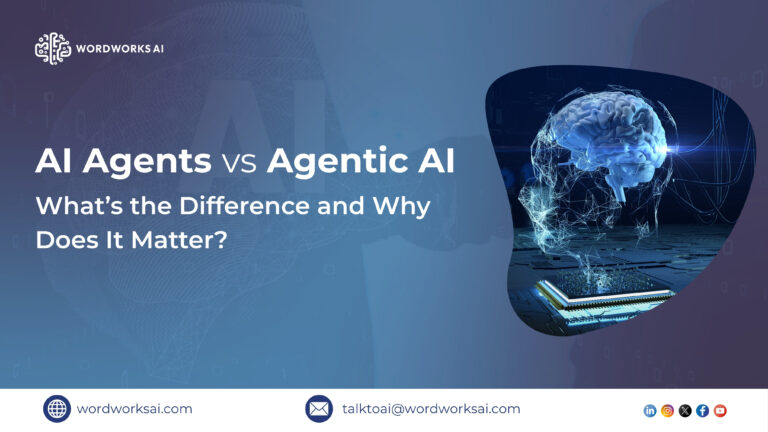Pioneering Governance and Compliance through the Presidio AI Framework for Responsible Generative AI Solutions
Summary
This whitepaper explores how Word Works AI aligns with the Presidio AI Framework, a structured approach for developing responsible generative AI solutions. The framework offers a roadmap for the secure and ethical deployment of AI. Our AI-powered chatbots and voice assistants solutions not only enhance operational efficiency but also adhere to the highest governance standards, making them ideal for industries requiring strict data security and compliance. We also highlight how our solutions streamline customer interactions while ensuring user privacy and regulatory compliance.
Introduction
As AI technology evolves, ensuring the safe and ethical deployment of AI models has become critical. The Presidio AI Framework, developed by the World Economic Forum and IBM Consulting, provides a structured approach to guide businesses through the safe development, deployment, and use of generative AI models. This whitepaper outlines how Word Works AI adopts this framework to create secure, scalable, and compliant AI chatbots and voicebots that cater to diverse industries, including customer service, healthcare, finance, e-commerce, education, retail, and manufacturing
Problem Statement
Generative AI systems offer transformative benefits, but they also introduce risks such as bias, data misuse, and lack of transparency. Without robust governance models, businesses face challenges in deploying AI responsibly, particularly in environments dealing with sensitive information. A comprehensive framework like the Presidio AI Framework is needed to address these concerns, ensuring AI solutions are developed and deployed with transparency, accountability, and safety in mind.
Understanding the Presidio AI Framework
The Presidio AI Framework proposes a comprehensive, multi-layered approach to AI governance that ensures the responsible and transparent deployment of AI systems across industries. It covers the entire AI lifecycle, emphasizing transparency, proactive risk management, and ethical AI practices through three core elements: the Expanded AI Lifecycle, Expanded Risk Guardrails, and the Shift-left Methodology. Key components include robust data management, foundation model development, and guardrails throughout the AI lifecycle, with proactive methodologies designed to mitigate risks such as data misuse, security vulnerabilities, and model bias early on. This ensures that AI systems are built with safety and compliance as core principles, delivering scalable and ethical AI solutions.
Below, the solutions from the whitepaper are structured under these three elements to provide a complete, multi-layered strategy.
Expanded AI Lifecycle
Data Governance is a critical aspect of the expanded lifecycle. Ensuring that data used for AI training is ethically sourced, transparent, and free of bias is crucial for developing models that perform accurately and fairly. Moreover, adherence to global privacy regulations like GDPR guarantees compliance and protects user data throughout the lifecycle.
The lifecycle extends beyond just the creation and training phases to include deployment and post-deployment monitoring. The AI systems developed under this framework are subject to continuous evaluation, ensuring that they remain compliant, effective, and ethical long after their initial implementation.
The integration of foundation models with built-in guardrails ensures that AI systems maintain safety standards across diverse applications and industries, especially in sensitive domains like healthcare and finance. These foundation models evolve with regulatory changes and best practices, providing an adaptable approach to managing AI systems over time.
Expanded Risk Guardrails
The Expanded Risk Guardrails aspect of the framework emphasizes the importance of proactive risk management across the entire AI lifecycle. This involves embedding security measures, ethical guidelines, and operational protocols that prevent risks such as data misuse, security breaches, and model bias before they can materialize.
- A key solution here involves embedding risk mitigation strategies into the design and development phase of the AI lifecycle, ensuring that potential risks are identified and addressed early. By implementing risk guardrails from the outset, the framework reduces the chances of AI systems perpetuating bias, privacy violations, or unethical behaviors.
- These guardrails are continuously audited and updated based on new regulations and ethics guidelines, making sure that AI models operate within the legal and ethical boundaries of various industries. This proactive approach ensures that any emerging risks are caught early and addressed before they escalate.
- The framework also promotes real-time auditing and continuous risk assessment, allowing organizations to dynamically adapt to new challenges and mitigate risks on the fly, without needing to overhaul the entire system.
Shift-left Methodology
The Shift-left Methodology in the Presidio AI Framework encourages moving risk detection and mitigation processes to the earliest stages of the AI lifecycle. This methodology ensures that AI systems are designed with risk management as a core principle from the very beginning, reducing the chances of costly and dangerous errors after deployment.
- The shift-left approach means that risk management protocols are embedded early in the AI design process, ensuring that challenges such as bias detection, security vulnerabilities, and ethical concerns are addressed long before the AI system is deployed. This helps prevent AI models from making harmful decisions or becoming vulnerable to attacks or misuse.
- By shifting these activities to the left, the framework ensures that guardrails are incorporated from the foundation of the AI system. This allows for more efficient detection of bias, inaccuracies, and ethical red flags during the model development process, mitigating risks early and significantly reducing the need for post-deployment corrections.
- The proactive nature of the shift-left methodology ensures that AI systems remain agile and scalable. By addressing risks at the design phase, the overall lifecycle of the AI system becomes more resilient to unforeseen challenges, reducing operational costs and improving system performance

How Word Works AI Adheres to the Presidio AI Framework
At Word Works AI, we have adopted the Presidio AI Framework to ensure that our AI-powered solutions meet global safety and governance standards. We align our solutions with the framework’s guidelines in the following ways:
Transparency and Accountability: Our chatbots and voicebots are designed with transparent AI models that ensure every interaction can be tracked and audited for compliance with privacy and ethical standards.
Proactive Risk Management: We implement model drift monitoring and reinforcement learning from human feedback to detect and mitigate potential risks early in the AI lifecycle.
Guardrails for Security and Privacy: We incorporate technical guardrails such as speech recognition AI, text-to-speech technologies, and natural language processing (NLP) to ensure data privacy, prevent misuse, and maintain compliance with regulations.
Phase-wise Distribution of the Framework
Data Management Phase
- Data access gradient: Word Works AI agents can manage different types of data such as web-crawled, user content, and public data. Ensuring proper consent and respecting privacy regulations are critical, especially when dealing with private or copyrighted data.
- Data sources types: The solutions can integrate multiple data sources, including sensor data and user inputs, which are crucial for training conversational AI models.
Foundation Model Building Phase
- Model design and training: In the context of our chatbot, the design phase includes setting up intents, entities, and dialogue management to handle different conversational scenarios. Training involves using actual conversational data, which must be handled responsibly to maintain user privacy and data integrity.
Model Adaptation Phase
- Fine-tuning: With AI-powered capabilities it allows room for customization and fine-tuning of AI models to specific business needs or contexts, using tools like webhook integration for dynamic responses based on external data.
Model Integration Phase
- Integration with applications: The models are typically integrated into broader applications or services, offering natural language understanding capabilities to various platforms such as websites, mobile apps
AI Application User Phase
- Interaction with users: End-users interact without solutions through various interfaces, necessitating robust implementation of guardrails to prevent misuse and ensure ethical usage of AI technologies.
Accessibility Gradient
- Hosted, API, and downloadable options: The solution provides different levels of access to its models, from hosted services where Google controls model interactions to APIs that allow businesses to integrate and control AI functionalities within their systems.

Business and Technical Benefits
Business Benefits: Our AI solutions enhance operational efficiency by automating routine customer interactions, such as appointment bookings and service queries. This ensures 24/7 availability and reduces operational costs while improving customer satisfaction.
Technical Benefits: Our chatbots and voicebots incorporate speech recognition, text-to-speech AI, and NLP technologies, delivering accurate, real-time responses while maintaining full compliance with data privacy regulations. This results in secure, scalable, and high-performing solutions across industries.
9. Competitive Advantage
Word Works AI offers AI solutions built with safety, scalability, and privacy in mind. By aligning with the Presidio AI Framework, we ensure that our AI chatbots and voicebots are designed to meet global standards for secure and responsible AI deployment. Our solutions offer seamless integration, enhancing customer engagement and operational efficiency, while maintaining high levels of data privacy and security.
10.About WordWorks AI
Founded in February 2024, WordWorks AI transforms business communication through cutting-edge AI solutions. Our products, including chatbots, voice bots, IT outsourcing, and CRM & ERP services, are designed to drive productivity and efficiency. For more information, visit wordworksai.com and follow @wordworksai on LinkedIn.
11. Final Thoughts
At Word Works AI, we are committed to delivering AI solutions that comply with global governance standards as outlined in the Presidio AI Framework. Our AI chatbots and voicebots provide businesses with the tools they need to enhance customer service, streamline operations, and ensure compliance with data privacy laws. To learn more about how our solutions can benefit your business, contact us today






